Our business risks and opportunities
As a company, we faced many challenges in 2021, including COVID-19-related risks, macro-economic volatility and logistical constraints.
THE ENTERPRISE RISK MANAGEMENT PROCESS AND GOVERNANCE
In a volatile economic environment characterised by change and uncertainty, risk management is a critical success factor for us to achieve strategic and business objectives. Embedding risk management into existing processes is key to making informed decisions and proactively planning for possible future events stemming from internal and external sources.
Our enterprise risk management (ERM) process is a strategic initiative fully supported by the board and executive management.
The ERM framework provides a proactive, systematic and integrated approach to risk management. The principles outlined in the framework form the foundation for the risk management philosophy, mission and vision.
The ERM framework and process are based on principles published by the Committee of Sponsoring Organisations of the Treadway Commission, the ISO 31000 international guideline on risk management and King IV. It also considered applicable codes of best practice such as ISO 9001, 14001 and 18001.
The ERM framework is regularly reviewed to ensure it remains relevant and effective.
We were able to manage these risks to be within our risk appetite due to our mature risk and crisis management process. We contained costs, focused on M2R and leveraged opportunities to create and preserve shareholder value.
We identify risk events at the organisation's strategic, tactical and operational layers. Significant risks from the strategic layer are filtered down to the tactical and operational layers and are supplemented by the identification of risks that have an impact across the organisation. Significant risks originating at an operational layer will also be elevated to a strategic or tactical layer if the residual risk and residual risk gap exceed certain thresholds. In this way, the process incorporates a top-down/bottom-up view of risks within the organisation.
RISK APPETITE AND THRESHOLDS
Exxaro's risk management philosophy identifies risk management as a strategic enabler rather than being compliance-driven. This ensures that we think and act proactively at every layer to pursue the company's strategic objectives.
The board and executive committee monitor KPIs quarterly to ensure all risks and key metrics are within Exxaro's risk appetite. The risk appetite framework is updated annually or when deemed necessary as part of the strategic planning process.
For details, please refer to performance against our strategy.
OPPORTUNITIES
We use the ERM framework to identify and realise opportunities - for example, early value coal extraction to maximise value in the short to medium term in view of the climate change risk. We believe that, for Exxaro to remain sustainable in the short term, it is important to adapt the minerals business to change and identify and pursue possible opportunities that ultimately create value, such as reducing stranded high-value coal reserve risk.
The opportunities we identified in 2021 informed our Sustainable Growth and Impact strategy.
|
|
|
| The early value coal strategy and our ability to maximise resource to market opportunities by leveraging the low cost and flexibility of our coal assets and Reserves. |
|
| Make our minerals and energy businesses thrive |
| Accelerated expansion into renewable energy will support our low-carbon transition. |
|
| Be carbon neutral by 2050
Make our minerals and energy businesses thrive |
| Impact investments provide an opportunity for Exxaro to leverage this financing market to support our just transition ambitions and align with our Sustainable Growth and Impact strategy. |
|
| Empower people to create impact |
| The hydrogen economy was identified as a strengthening signal through our foresight process and market analysis conducted in 2021. Following this analysis, we concluded that hydrogen provides tailwind opportunities for our energy business and is not of significant interest to necessitate a horizon 2 shift at this stage. |
|
| Make our minerals and energy businesses thrive |
| Nature-based solutions to mitigate the impacts of climate change were identified as an opportunity, especially in lieu of the vast amount of viable land that Exxaro has at its disposal. We intend to maximise this opportunity through our Sustainable Growth and Impact strategy. |
|
| Be carbon neutral by 2050 |
| Investing in self-generation facilities is an opportunity we are leveraging, which aligns with our renewable energy growth strategy. A memorandum of understanding was signed with Eskom and Seriti Resources in 2021. |
|
| Make our minerals and energy businesses thrive |
| The global energy transition provides opportunity to mine and supply the minerals that support green technologies. Through a rigorous screening process, Exxaro identified copper, manganese and bauxite as being most aligned to our experience, capabilities and market forecasts. |
|
| Make our minerals and energy businesses thrive |
2021 RISK TREND
The trend report indicates changes in the residual risk score when comparing the 2020 and 2021 financial years.
Our risk scores are derived from the product of the likelihood and the impact of the unwanted event*. The top 10 risks are arranged from highest to lowest risk score.
* Risk = f (Likelihood of risk occurring x Impact of the risk)
 Residual risk increased compared to previous year
Residual risk increased compared to previous year
 Residual risk remained unchanged compared to previous year
Residual risk remained unchanged compared to previous year
 Residual risk decreased compared to previous year
Residual risk decreased compared to previous year
TOP 10 HEAT MAP
Exxaro's top 10 risks are plotted inherently (before controls) and residually (after controls) on the heat maps below, followed by an outline of our key identified risks, the main drivers, their potential impacts and mitigating treatments. We have considered internal and external risks. Our mitigation strategies depend on the severity of impact and likelihood of occurrence.
Coal beneficiation plan at our Grootegeluk BU in the Waterberg
MANAGING OUR RISKS
Various risk treatment strategies are evaluated, including risk avoidance, reduction, sharing acceptance or transferring. When selecting risk treatment options, we consider the values and perceptions of stakeholders and the most appropriate ways to communicate them.
The decision to implement a treatment is based on risk tolerances, the effect the treatment will have on the impact and likelihood ratings, and the results of the cost versus benefit evaluation. Once a risk treatment is implemented, Exxaro develops ongoing mechanisms to monitor the implementation and effectiveness of the risk treatment.
| 1 |
Management of risk (risk owner) |
| 2 |
Management support and oversight |
| 3 |
Independent assurance |
 |
Residual risk increased compared to previous year |
 |
Residual risk decreased compared to previous year |
 |
Residual risk remained unchanged compared to previous year |
 |
New |
1. UNAVAILABILITY OF RAIL CAPACITY (2020: 3)
Drivers
|
| Impacts
|
- Cable theft and derailments
- Transnet's locomotive availability
- Inadequate fleet maintenance due to lack of spares at TFR
|
|
- Operational stoppages
- Financial loss
- Unable to meet contractual agreements and 2021 budget
- Unable to grow and execute the value extraction strategy
- Shareholder dissatisfaction
|
Treatments
|
| Outlook |
- Marketing and logistics team exploring options to evacuate export-bound coal
- Continuous engagement with TFR to understand
issues and provide assistance
|
| Operational and maintenance challenges are expected to continue to have a significant impact. Sustainable solutions to current challenges will be explored through proactive engagement with Transnet and the industry. |
Strategic KPIs
|
| Strategic objective impacted |
- Core operating margin
- Annualised ROCE
- Annual core HEPS and net debt to annualised EBITDA
|
| Make our minerals and energy businesses thrive |
|
|
|
|
|
|
|
|
Material theme

|
|
Capitals impacted

|
|
|
Line of defence
1
|
| Risk score trend
 |
2. ESKOM SYSTEMIC RISK (2020: 2)
Drivers
|
|
| Impacts |
- Inadequate environmental financial provision at tied operations
- Environmental rehabilitation fund shortfall at Matla
- Realisation of approved funding for capital requirements (Matla capital project programme)
- Further delays in Eskom's Medupi power station operating at full capacity
- Eskom not honouring commercial rights and obligations as per coal supply agreements (Eskom liquidity)
|
|
|
- Cost of coal production becomes uncompetitive at Matla (lack of capital)
- Loss of revenue
- Reputational damage
- Cash flow constraints at Eskom resulting in late or no payment to Exxaro
- Operational constraints
|
Treatments
|
|
| Outlook |
- Enforce coal supply agreements and award arbitration in terms of environmental funding
- Allocate capital expenditure to build siding to evacuate coal at Matla
- Actively participate in moving coal from Waterberg to Mpumalanga
- Engage with top management and interact with ministers when required
- Continue evaluating and discussing Matla's future
|
|
| Eskom's financial challenges will remain a concern in the short to medium term as government continues to reform South Africa's electricity sector and Eskom implements its turnaround strategy and restructuring. |
Strategic KPIs
|
|
| Strategic objective impacted |
- Core operating margin
- Annualised ROCE
- Annual core HEPS and net debt to core EBITDA
|
|
| Make our minerals and energy businesses thrive |
|
|
|
| |
|
|
Material theme
 |
|
Capital impacted
 |
|
|
|
| Lines of defence
1 and 2
|
| Risk score trend
 |

Part of the coal beneficiation plant at Grootegeluk with the Medupi power station in the background
3. INABILITY TO ACHIEVE FINANCIAL TARGETS (2020: 9)
Drivers
|
|
| Impacts |
- Macro-economic factors
- Disaster Management Act, 2002 (Act 57 of 2002) directives issued
- Critical input supplies not available
- Counterparties not meeting contractual obligations (TFR, Eskom and AMSA)
- Claims from contractors due to the impact of COVID-19 on timelines
- Reduced rail capacity for exports in 2021
|
|
|
- Cash flow constraints
- Increased cost of production
|
Treatments
|
|
| Outlook |
- Disposal of ECC* and the Leeuwpan operations (high on the cost curve)
- Ability to refinance loan facilities
- Focus on current operating excellence and digitalisation initiatives to reduce rand per tonne impacts
- Proactively draw down available borrowing facilities
- Evaluate claims from contractors in terms of process (supply chain and projects)
- Detailed daily cash flow management
- Monitor supplier financial status (critical and strategic suppliers)
|
|
| Unavailability of TFR capacity is one of the main drivers that contributed to an increase in the risk rating. The focus still remains on the M2R strategy and to maximise value with our available capacity.
The coal portfolio is continuously reviewed to focus on robustness of assets and drive value maximisation strategy. |
Strategic KPIs
|
|
| Strategic objective impacted |
- Core operating margin
- Annualised ROCE
- Annual core HEPS and net debt to annualised EBITDA
|
|
| Make our minerals and energy businesses thrive |
|
|
|
|
|
|
|
|
Material theme

|
|
Capital impacted
 |
|
| Lines of defence
1, 2 and 3
|
| Risk score trend

|
*Divestment concluded in September 2021.

Results presentation
4.COMMUNITY UNREST (2020: 4)
Drivers
|
|
|
| Impacts |
- Dissatisfaction with local economic development initiatives
- Political agitation
- High unemployment rate
- Poor/lack of service delivery by local government
- High demand for skills development, employment and local procurement
- Instability at most municipalities post-2021 municipal elections
- Perceived slow transformation at operations
- Conduct of contractors (employment practices) that Exxaro is seen as endorsing
- Fractured communities and competing interests
- Manipulation of information/community against Exxaro
- Lack of employment opportunities (worsening since COVID-19)
- Economic recession resulting in job losses during the pandemic
- Lack of procurement opportunities
|
|
|
|
- Production interruptions
- Negative media reports (reputation)
- Jobs/opportunities for sale (misrepresents Exxaro)
- Potential harm to mine employees and contractors
- Potential damage to mine equipment and property
|
Treatments
|
|
|
| Outlook |
- Emergency response and crisis management plans
- Municipal capacity building programme
- Impact Catalyst projects (refer to the ESG report)
- ESD programme (including contractors)
- Build local, provincial and national government relationships
- Invest in non-mining skills development programmes
- Roll out bursaries/skills development programmes
- Transparent and ongoing communication with communities
- Effective local procurement strategy
- Certified COVID-19 testing facilities in Mpumalanga and Limpopo for community members in place
|
|
|
| We drive long-term sustainable economic and social growth in the regions where we operate to ultimately leave a positive legacy beyond LoM.
The implementation of the Sustainable Growth and Impact strategy to expected expand on positive impact created in the communities we operate and beyond. |
Strategic KPIs
|
|
|
| Strategic objective impacted |
- B-BBEE contribution level
- Black ownership
- SLP project delivery
- Community benefit initiatives
- ESD performance
|
|
|
| Empower people to create impact |
|
|
|
|
| |
|
|
|
|
Material theme

|
|
Capital impacted |
|
|
|
| Lines of defence
1 and 2
|
| Risk score trend

|
5. CYBERSECURITY THREATS (2020: 8)
Drivers
|
|
|
| Impacts |
- Large number of devices connected to the corporate network increase our vulnerability, especially in operational systems (Internet of Things)
- Vulnerability due to lack of awareness
- Limited technology resources to accommodate remote working
- Most employees worked remotely during lockdown
- New ransomware models
|
|
|
|
- Production and financial loss
- Information loss - Protection of Personal Information, 2013 (Act 4 of 2013) (POPIA) implications
- Business interruption
- Legal and regulatory impacts (POPIA implications)
|
Treatments
|
|
|
| Outlook |
- Ensure we have security governance in place and that it is monitored
- Prevent data loss
- Stricter security practices
- Ensure regular and ongoing security awareness
- Monitor compliance with POPIA
- Business continuity management plan and disaster recovery testing
|
|
|
| The prevalence of cybersecurity attacks, with ransomware the most prevalent, is expected to increase. Proactive action improves the robustness of the cybersecurity posture. Exxaro continues to benchmark its cybersecurity profile to enhance our efforts on vulnerability identification and management. |
Strategic KPIs
|
|
|
| Strategic objective impacted |
|
|
|
|
| - Make our minerals and energy businesses thrive
|
Material theme

|
|
Capital impacted
 |
|
|
|
| Line of defence
1, 2 and 3
|
| Risk score trend
 |

Digital operation centre at our captive coal mine, Matla
6. COVID-19 CONCERNS (2020: 1)
Drivers
|
|
|
| Impacts |
- Commodity price volatility
- Disengaged and anxious workforce (permanent employees and contractors)
- Rapid spread of COVID-19
- Increased risk of cyberattacks due to remote working
- Deterioration of employee health (mental and physical)
- Uncontrollable cost of goods and services
- Unavailability of critical goods and services
- Community unrest due to loss of livelihoods impacting Exxaro's operations
- Counterparty risk (contractors/suppliers/customers)
- Productivity decline (operations not operating at full capacity and not complying with disaster management guidelines, among others)
- Possible resistance to vaccination and boosters
- Perpetual cycles of COVID-19
|
|
|
|
- Safety impacts (fatalities and incidents)
- Health and mental wellbeing impacts
- Financial losses
- Unable to meet financial targets
- Legal and regulatory non-compliance with the Disaster Management Act, 2002 (Act 57 of 2002)
- Production stoppages
- Delay in implementation of strategy
- Inability to obtain lines of credit
|
Treatments
|
|
|
| Outlook |
- Implement strict security processes and tools, and increase monitoring
- Certified testing facilities in Limpopo and Mpumalanga to conduct mass testing
- Mental wellness programmes in place
- Monitor compliance with contractual agreements (cost of goods and services)
- Monitor critical goods stock levels and services required
- Ongoing engagement with Minerals Council, and provincial and local governments
- Ongoing monitoring of messaging and continuous updates of critical information
- Roll out and continuously update COVID-19 business continuity management plan at operations
- Human resource guidelines in line with government's lockdown regulations
- Activation of crisis management plan
|
|
|
| The COVID-19 management plan will continue to be implemented with focus on disease management protocols given the anticipated wave of infections during winter.
With more than 80% of the workforce vaccinated, Exxaro will continue to roll out the vaccination programme, including administering booster vaccines. |
Strategic KPIs
|
|
|
| Strategic objective impacted |
- Core operating margin
- Annualised ROCE
- Annual core HEPS and net debt to annualised EBITDA
- LTIFR
- Fatalities
- Project delivery KPIs including SLPs
- Mining Charter III and B-BBEE targets not achieved
|
|
|
| Make our minerals and energy businesses thrive |
Material theme
 |
|
Capitals impacted
 |
|
| |
Lines of defence trend
1 and 2
|
| Risk score
 |
7. SAFETY AND HEALTH CONCERNS (2020: 5)
Drivers
|
|
|
| Impacts |
- Rapid spread of COVID-19 infections among employees and contractors
- Anxious and disengaged workforce (additional COVID-19 regulations and some companies impacted by COVID-19 having to retrench contractors)
- High/excessive fatigue levels
- Poor procedures for maintenance of equipment and machinery
- Inadequate on-the-job training due to illiteracy
- Lack of awareness of health risks
- Lack of hazard awareness
- Non-adherence to procedures
- Lack of communication between teams working on equipment
- Lack of change management
- Design or modification of equipment without sign-off
- Inadequate supervision
- Perpetual cycles of COVID-19
- Demobilisation and divestment journey
|
|
|
|
- Unwanted health and safety incidents
- Operational stoppages
- High insurance premiums
- Loss of licence to operate
- Decrease in quality of life
- Section 54 and 55 fines and penalties imposed by the DMRE
- Loss of productivity (deaths, medical incapacity or sick leave)
|
Treatments
|
|
|
| Outlook |
- Analyse historical incident data to identify trends and root causes
- Mental wellness programmes
- Certified COVID-19 testing facilities in Mpumalanga and Lephahlale
- Ongoing safety, health, environment and community risk management
- Improve safety management with innovation (including wearables)
- Ensure proximity detection systems are implemented and maintained
- Ensure safety improvement plan is communicated and implemented
- COVID-19 response plan developed and rolled out
|
|
|
| Our employees' safety remains a top priority. Although good safety performance has been demonstrated in the recent past, we continue to implement the safety strategy, focusing on safety improvement in our quest for zero harm. |
Strategic KPIs
|
|
|
| Strategic objective impacted |
- Fatalities
- LTIFR
- OHIFR
- Number of safety and health stoppage directives in terms of section 54 of the Mine Health and Safety Act, 1996 (Act 29 of 1996)
|
|
|
| Make our minerals and energy businesses thrive |
Material theme
 |
|
Capitals impacted
 |
|
| |
Lines of defence
1, 2 and 3
|
| Risk score
trend
 |
8. COST COMPETITIVENESS OF PRODUCTS (2020: 6)
Drivers
|
|
|
| Impacts |
- Limited LoM
- Poor capital project execution
- Not achieving productivity indices (benchmark standards)
- Cost containment discipline not uniform
- Inflationary pressures
- Deteriorating mining conditions (decreasing yield and increasing stripping ratio)
- Not meeting production volumes
- Exchange rate volatility
- Commodity price decline
- Inaccurate financial modelling
- Higher fixed costs (corporate office costs charged to BUs)
- South African geographical constraints
- Frequent changes in legislation (cost of licence to operate)
|
|
|
|
- Reputational damage
- Social impact
- Financial loss
- Margin squeeze
- Premature mine closure and allocation of costs to other operations
- Reduced earnings will impact approval of capital projects
|
Treatments
|
|
|
| Outlook |
- Embrace technology and innovation initiatives to improve productivity performance
- Ensure BUs comply with concurrent rehabilitation
- Optimise operating model and avoid duplicated activities
- Create strategic partnership to leverage economies of scale
- Ensure balance between capital optimisation and prioritisation
- Investigate and divest non-core and non-robust assets
- Provide for post-production stoppage (rehabilitation cost)
- Review and monitor performance of suppliers and service providers
- Increased awareness of cost management
- Focus on sustainable cost reduction programmes and business improvement initiatives
- Planned reviews by coal operating company
- Rebalancing product chains for better use of infrastructure
|
|
|
| Inflationary pressure expected to continue to persist given challenges in the global economy exacerbated by the Russia/Ukraine conflict.
We continue tracking and monitoring initiatives to manage ongoing volatile conditions and cost pressures, focusing on reducing consulting costs and continued focus on
production efficiencies.
|
Strategic KPIs
|
|
|
| Strategic objective impacted |
- Core operating margin
- Annualised ROCE
- Annual core HEPS and net debt to annualised EBITDA
|
|
|
| Make our minerals and energy businesses thrive |
Material theme
 |
|
Capitals impacted
 |
|
| |
Lines of defence
1, 2 and 3
|
| Risk score trend
 |
9. CLIMATE CHANGE CONCERNS (2020: 7)
Drivers
|
|
|
| Impacts |
- Poor plant or operations design unable to withstand extreme weather conditions
- Poor monitoring and reporting of climate change impacts
- Infrastructure vulnerabilities
- Lack of awareness of climate change impacts
- Increased non-governmental organisation activism
- International and local investor negative sentiment towards fossil fuels
|
|
|
|
- Reputational damage
- Loss of licence to operate
- Financial loss (increased carbon tax, among others)
- Environmental impacts (extreme heat and drought)
- Legal claims against heavy polluters
- Health and safety impacts on employees (increased occupational incident rate due to heatstroke and increase in skin cancer, among others)
- Energy security and supply
- Loss of throughput
- Natural disasters (flooding)
|
Treatments
|
|
|
| Outlook |
- Invest in renewable energy initiatives
- Raise awareness about climate change impacts
- Continuously investigate measures to reduce climate change impacts
- Engagement with regulators to anticipate policy changes
- Investigate suitable personal protective equipment for extreme weather conditions
- Link performance reward system to climate change mitigation
- Review conditions of work under extreme weather conditions
- Engage with government and other role players in the industry to align in the transition to a low-carbon future
- Invest in appropriate technology to reduce our emissions
- Embed climate change mitigations in design criteria for existing and new projects
- Plan and embark on our early value coal strategy to reduce stranded assets
- Develop a renewable energy strategy to transition to a low-carbon economy
- Adopt the TCFD framework to engage with stakeholders
- Align with the Paris Agreement
- Develop market intelligence on carbon pricing
- Effective water management processes for water security
|
|
|
| We will execute our decarbonisation plan and have implemented a process to create baseline measures and planning for decarbonisation initiatives.
|
Strategic KPIs
|
|
|
| Strategic objective impacted |
- Water intensity
- Carbon intensity
|
|
|
| - Be carbon neutral by 2050
|
Material themes
 |
|
Capitals impacted |
|
| |
Lines of defence
1, 2 and 3
|
| Risk score trend
 |
10. COUNTRY RISK (POLITICAL) (2020: 8)
Drivers
|
|
|
| Impacts |
- Lack of investment and low employment creation
- Uncertainty about land ownership and security of tenure
- Limited local government capacity to deliver services
- Potential for nationalisation sentiment
- Continued poor economic performance will influence policy and political outcomes
- Slow implementation of required reforms
- Corrupt practices (private and public sector)
- Rating agencies downgrade South Africa to junk status
- South Africa's real GDP growth forecast to be (3.1%) for 2021
- Limited fiscal capacity
- National party leadership elections every five years
- Nature of influence of opposition parties
|
|
|
|
- Political instability
- Possibility of community unrest for political support
- Stakeholder dissatisfaction
- Potential regulatory penalties/oversight
- Increased compliance burden
- Potential increase in royalties/taxes
- Reduced investment opportunities (increase in cost of capital)
- Increased cost of doing business (due to increased compliance burden)
- Fewer opportunities for co-investment with government in community development
- Breakdown in government relationships with Exxaro
- Higher expectation from society and government for more social investment
- Potential for junk status rating and downgrade of Exxaro's credit status due to link to Eskom
- Pressure on revenue
- Policy uncertainty
|
Treatments
|
|
|
| Outlook |
- Aligning our purpose with governance and ethics
- Continuous monitoring of independent country risk assessment report
- Engage with shareholders on coal business and capital allocation for new strategy
- Establish and participate in collaborative regional development platforms for community impact
- Develop renewables strategy that could result in new investment and electricity security
- Long-term investment perspective for growth, development and impact
- Municipal capacity building
- Ongoing engagement with Minerals Council and provincial and local governments
- Strive for full compliance with relevant legislation for business continuity
- Continued support of relevant business lobby groups to engage business and government
- Increased and improved analysis of dynamic political landscape and impacts on stakeholders
- Increased focus on provincial and local players and intensified engagement across local stakeholder networks to mitigate shocks "from above"
|
|
|
| Socio-political risks, policy certainty and sluggish South African economy expected to continue influencing this risk. |
Strategic KPIs
|
|
|
| Strategic objective impacted |
|
|
|
|
| |
Material theme
 |
|
Capitals impacted
 |
|
| |
Line of defence
1
|
| Risk score trend
 |
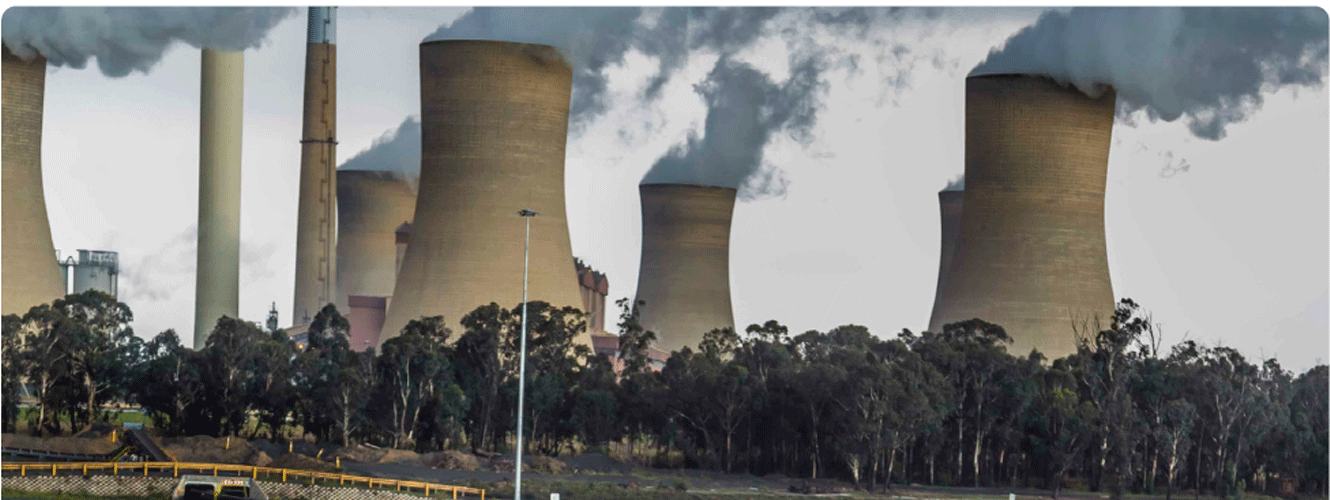
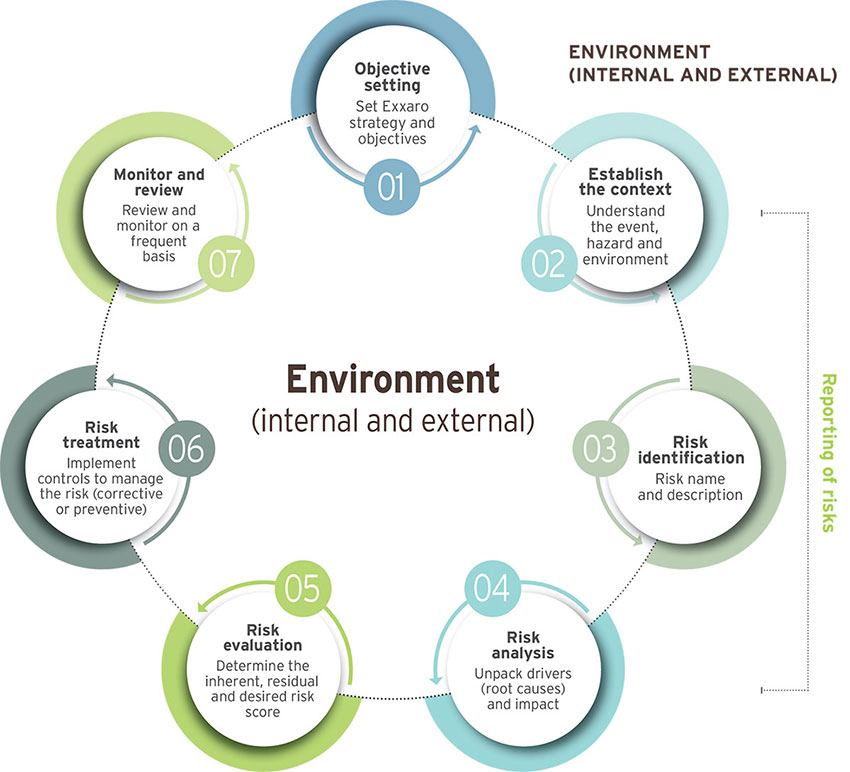
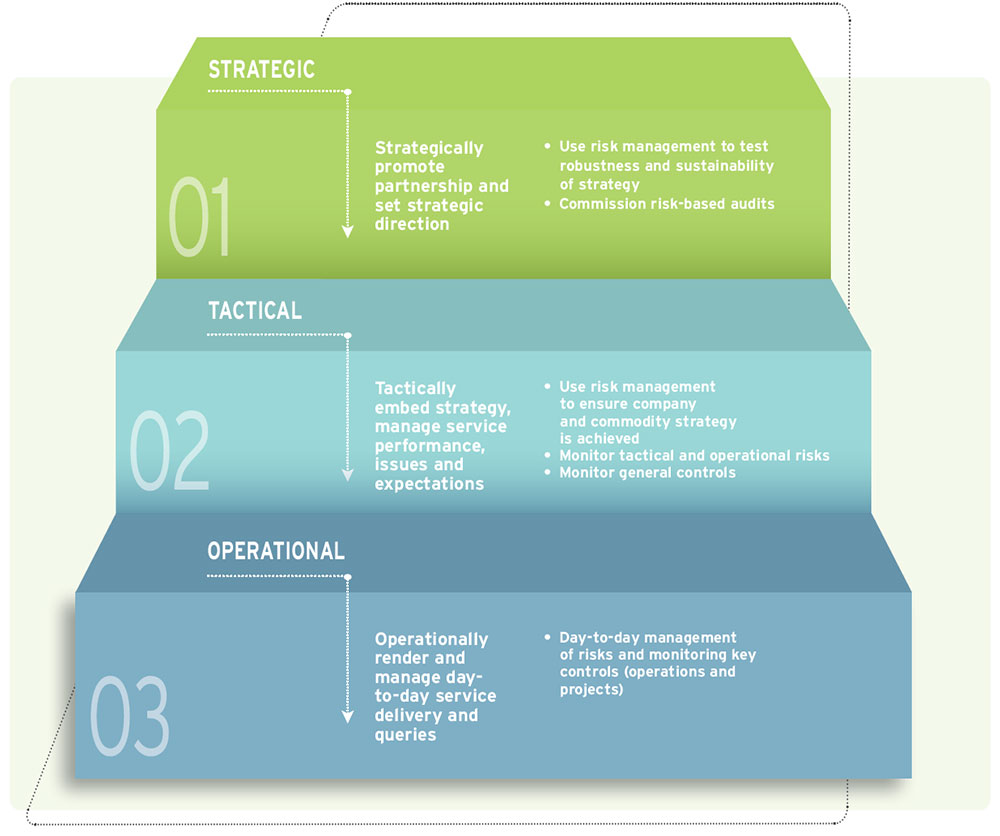
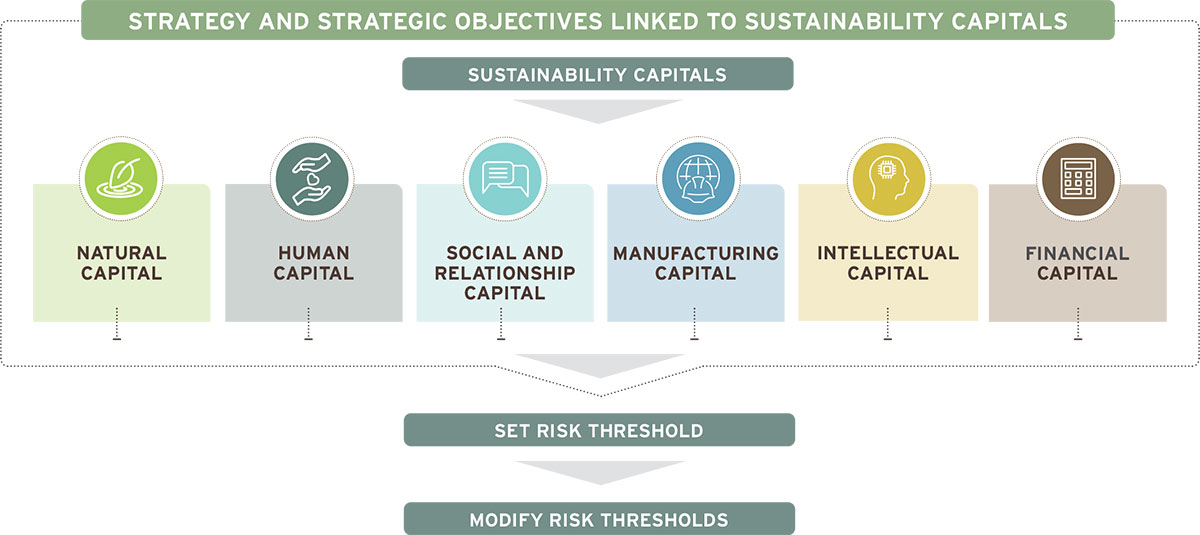
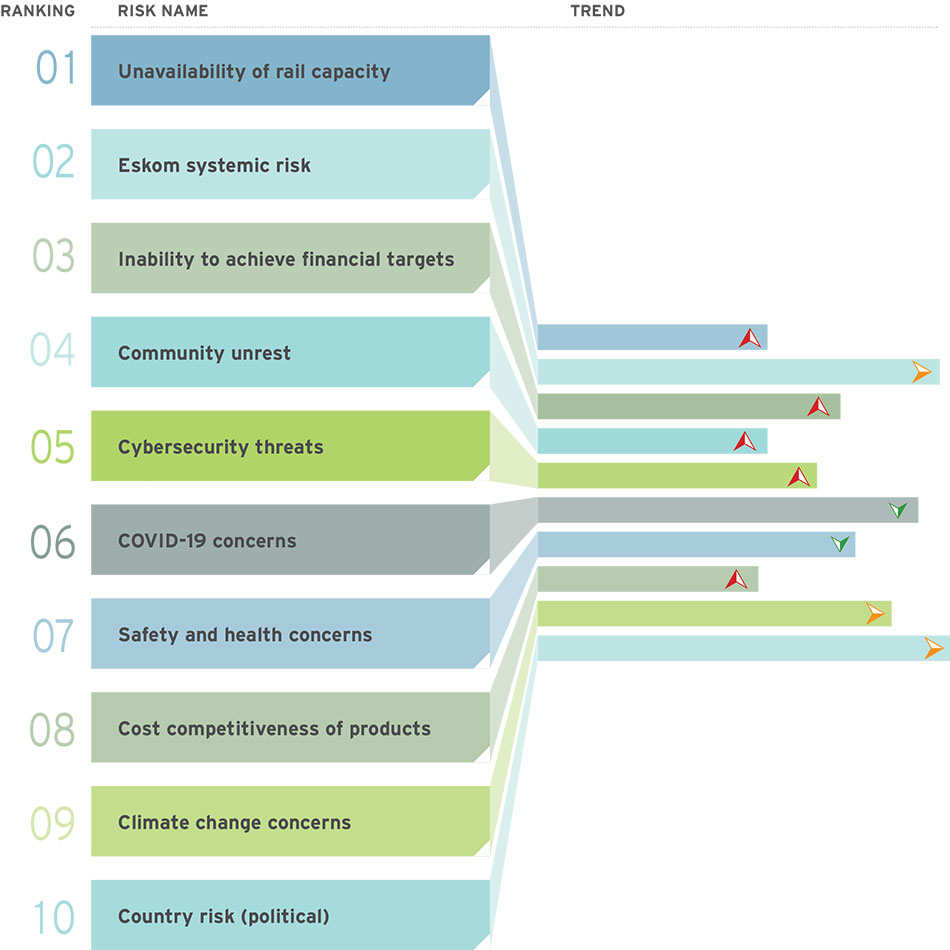
 Residual risk increased compared to previous year
Residual risk increased compared to previous year Residual risk remained unchanged compared to previous year
Residual risk remained unchanged compared to previous year Residual risk decreased compared to previous year
Residual risk decreased compared to previous year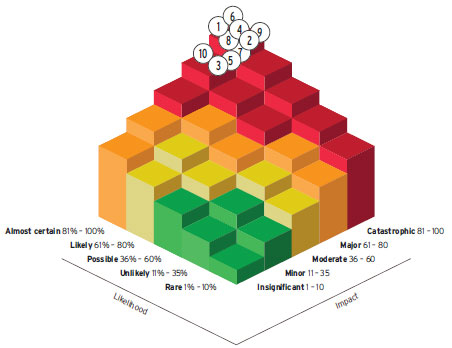

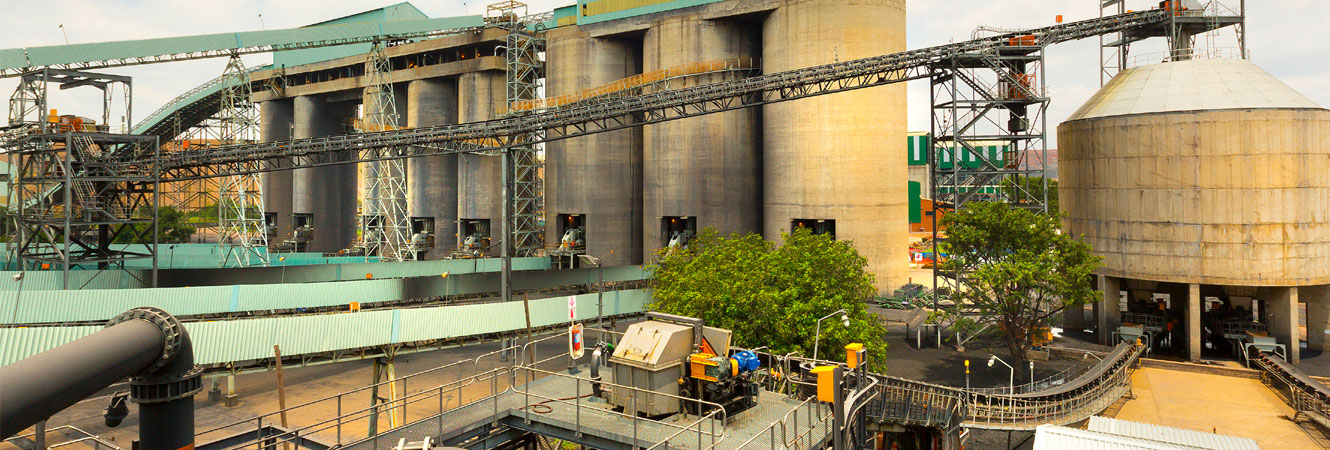






































 Report Index
Report Index